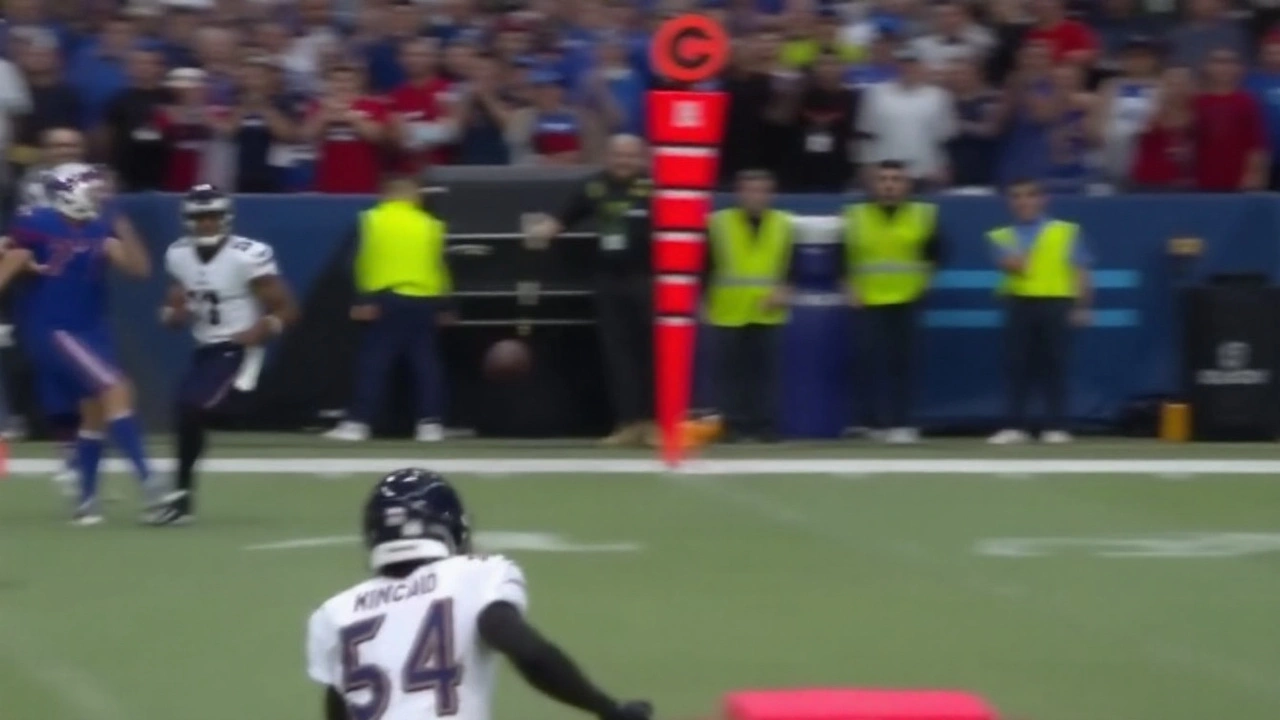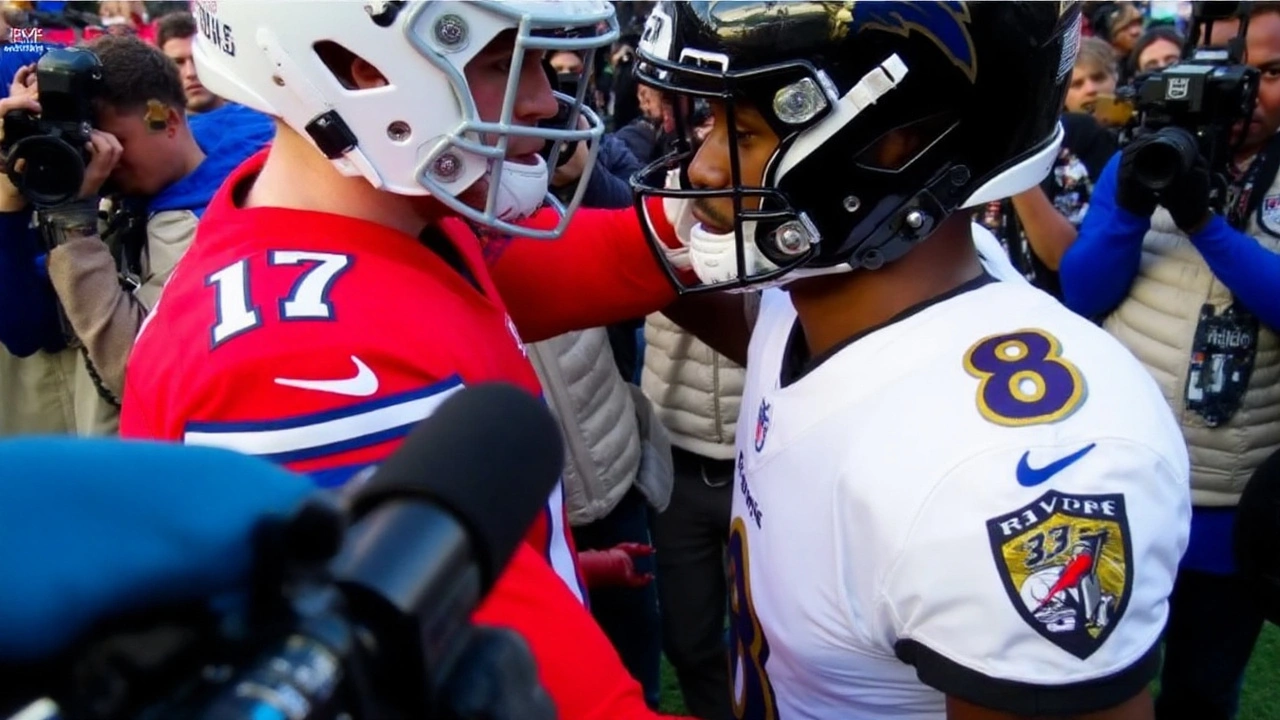Bills erase 15-point hole in the fourth
Highmark Stadium’s last first impression couldn’t have been louder. On a crisp 57-degree night, Buffalo opened its final season at the old place by climbing out of a 15-point fourth-quarter deficit to beat Baltimore 41-40, a wild, breathless finish that reminded everyone why the NFL schedules this stage for Sunday Night Football. It took a veteran kicker who arrived midweek, a rookie receiver with strong hands, and a defense that woke up just in time.
The winner came from 32 yards off the right foot of Matt Prater, who was in street clothes somewhere else 96 hours earlier. Signed as an emergency replacement for Tyler Bass, Prater delivered a calm, clean strike with seconds left. No drama on the exchange. No wobble in the ball flight. Just a veteran doing a veteran thing after a hurried crash course with new teammates.
That kick capped a frantic finish to a game Baltimore had controlled for most of the night behind Derrick Henry’s bruising power and Lamar Jackson’s constant stress on the edges. By halftime, Henry had 123 yards and a touchdown, a throwback performance built on his stiff-arm and a glide that still shows up once he gets through the wash. He later added a 49-yard breakaway and finished with 169 yards and two scores—numbers that usually send the opposing crowd home early. Not here. Not on this night.
The fourth quarter flipped everything. Buffalo’s defense, gashed for long stretches, ripped the ball out on a Henry carry and gave Josh Allen a short runway. Then came a Ravens three-and-out—one of those quick, stale possessions that turns stadium noise into a headache for the road team. With the game teetering, Allen delivered two drives that looked like they were scripted in training camp and saved for the opener. The biggest throw went to rookie Keon Coleman, a tight-window laser on the boundary that set the Bills up to drain the clock and let Prater end it.
For most of the first three quarters, Baltimore looked like the cleaner outfit. The run fits were tight. The offense kept ahead of schedule. Jackson, the reigning MVP before last season’s award changed hands, kept punishing Buffalo when the pass rush got too wide. But when the clock shrank, so did the margin for error. The Ravens blinked. The Bills didn’t.
Buffalo starts 1-0 in a season stuffed with emotion and expectation. The new stadium is nearly finished next door, the banners and memories from the old one hanging like family photos, and this opener felt like one the locals will file under “How could you ever forget?” Baltimore, now 0-1, leaves with bruises, big yardage, and the worst kind of lesson—how quickly a sure thing becomes a sick feeling when a veteran team finds a spark.

How the game flipped: key moments and context
Start with Henry. Baltimore built almost everything off his rhythm. Early on, the Ravens’ line got movement, the tight ends won at the point, and Henry set the tone by keeping the chains out of third-and-longs. The Bills were guessing wrong too often—squeezing inside zones when the ball bounced, widening just as the Ravens cut back. It wasn’t just the yards; it was the body blows that set up Jackson on keepers and play-action. Baltimore’s plan was obvious and effective: make Buffalo defend 60 minutes of contact.
But the longer the game went, the more Buffalo adjusted. The Bills started pinching on the interior and setting a firmer edge to force Henry toward help. Safeties filled with better timing. And when they finally got a glove on the ball, it popped free at the worst possible moment for Baltimore. That turnover shifted everything—field position, energy, even the way the Ravens called plays. Suddenly, Baltimore wasn’t just closing a game; it was surviving it.
Allen’s composure showed up right then. He didn’t chase hero throws. He worked the underneath stuff, used his legs when the pocket got muddy, and took the play the defense offered. The sideline throw to Coleman stood out. It was the kind of ball a quarterback trusts only if he believes his rookie will fight through contact, win leverage, and get down in bounds. Coleman did all three. On a night filled with star power—Allen, Jackson, Henry—that snap belonged to a first-year wideout who acted like he’d been around this stage for years.
Prater’s role can’t be overstated. Kickers crave routine and relationships—the snapper’s speed, the holder’s tilt, the timing of the approach. Those reps usually take weeks to feel natural. Prater had days. He made it look like months. The plant foot was steady. The contact was pure. A clean swing in a moment that would rattle most players wearing a new uniform.
Meanwhile, the Ravens’ fourth-quarter sequence invites questions. Up 15, they leaned into their identity—and that’s understandable when Henry is rolling. But the pace got predictable, and the Bills started winning first down. A quick three-and-out gave Buffalo another possession with good time and decent field. That’s where Baltimore will feel this one most in the film room—not one decision, but a short stretch where they stopped stacking runs with enough variety and lost the thread.
Defense decided the rest. Buffalo didn’t dominate, but it made the game-winning plays: the forced fumble on Henry, tight coverage in the seams, and a pass rush that finally squeezed Jackson to spots he didn’t like. The Ravens still moved the ball late, but the explosive shots dried up, and everything felt harder. Those are the moments when a home crowd can tilt a play, and the Highmark noise did its part.
The quarterback duel delivered exactly what it promised. Jackson showcased pace control—speeding up to stress the edges, then slowing down to let blocking develop. Allen countered with second-reaction brilliance, turning two dead snaps into positive yards and buying just enough time for crossers to uncover. The MVP tag isn’t a trophy in these games; it’s a demand. Both played to it. Allen simply had the ball last with momentum.
Beyond the stars, the details told the story: Buffalo’s offensive line, leaky at times early, settled down and passed off stunts cleaner in the fourth. The Bills’ receivers did the dirty work—crisp splits, stronger stems, better depth on the screens that set up manageable third downs. Baltimore’s tackling, sharp for most of the night, faded just a touch as the Bills pressed the tempo. Those tiny shifts add up fast when a team is chasing two scores and the clock is bleeding.
Context matters here too. This was more than a Week 1 showcase; it was a tone-setter for an AFC race that leaves little room for early doubt. Buffalo needed a signature moment to launch a season carrying the weight of a stadium farewell and years of near-misses. Baltimore needed a road statement to show its remodeled offense can bully anyone anywhere. One game won’t settle either narrative, but the path forward looks different now. The Bills can point to resilience baked into their DNA. The Ravens will talk about finish—how to close when their run game is the hammer and the opponent is pinned to the anvil.
Key sequence snapshots that swung the night:
- Henry’s fourth-quarter fumble in the shadow of midfield, flipping momentum and handing Buffalo short field.
- Baltimore’s immediate three-and-out, a rare empty drive against a defense that had been on skates for two and a half quarters.
- Allen to Coleman on the boundary—strong hands, tight window, perfect timing to keep the clock moving and the chains rolling.
- Prater’s 32-yarder: clean snap, smooth hold, veteran tempo under pressure for the 41-40 lead.
The setting mattered. The cool air, the last-first under the Highmark lights, and a fan base that has heard every echo from this building for decades. You could feel the urgency when Buffalo got the ball back down two possessions. You could feel the doubt in the building when Henry was dragging tacklers. And you could feel the release when the kick sailed through and the noise turned into a long, relieved exhale.
For Baltimore, there’s no need to reinvent anything after one loss that still offered proof of concept. The run game travels. Henry looks like Henry. The quarterback is still a nightmare to corral. The fix is about finishing: closing tempo, a few tendencies to break in late-game scripts, and a plan for when an opponent starts sitting on first-down runs. Clean up those spots, and this box score reads differently.
For Buffalo, the win is more than a rally. It’s validation for the way they want to play when the field shrinks—lean on a quarterback who can make three different kinds of throws in one series, trust a rookie with a grown-up catch radius, and let a veteran specialist handle the cold-blooded stuff. The defense won’t love the film, but it will love the final two possessions. And in a league where style points don’t count, that’s enough.
Week 1 rarely decides anything. But it can announce identities. The Ravens announced that Henry changes the geometry of every drive. The Bills announced that no lead is safe if they’re within two scores late in their stadium, with their quarterback, and their crowd in full voice. On a night built for heavyweights, the final punch came from a kicker who barely knew his way around the locker room.

